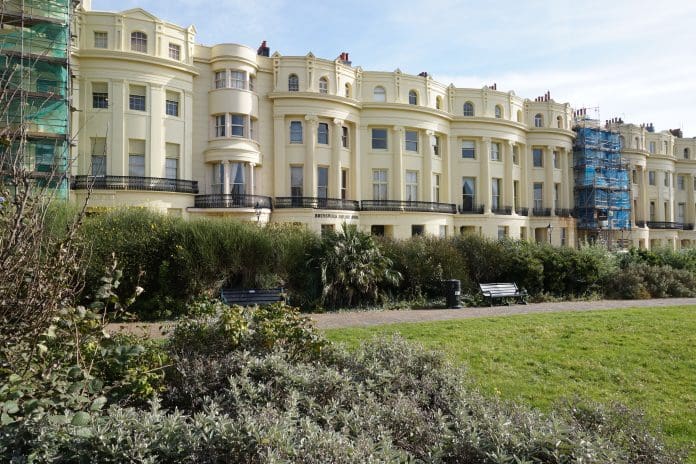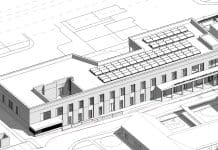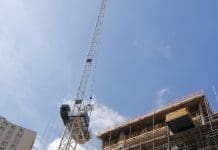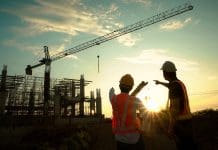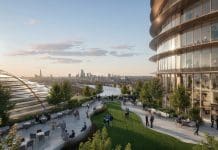The UK is rich in its cultural heritage, and in the face of climate change and a pressured economic landscape, it is more important than ever to consider its preservation and conservation areas
Sebastian West, principal landscape manager at Stephenson Halliday, an RSK Group company, explores the role of conservation area appraisals in ensuring preservation. What are these puzzle pieces’ importance within our cities, towns and villages, and what challenges and opportunities do they present?
Our national conservation areas and historic sites provide cultural connections with people, events and places. They are an intrinsic part of our built heritage and enjoy special protection under legislation at both national- and local-level policy. Today, there are more than 10,000 conservation areas in the UK, many of which are historic and culturally significant sites. Still, these areas now have to work harder in the face of climate change and societal challenges, including funding cuts.
At its most simplistic definition, a conservation area is a place of special architectural or historic interest, the character or appearance of which is desirable to preserve or enhance. We must identify and protect these valued, distinctive and attractive places for our nation.
Because of this need, under current legislation, local planning authorities are required to maintain conservation area appraisal and management documents for each conservation area in their jurisdiction.
This requires reassessments and updates on an ongoing basis to manage change positively, which is particularly important when considering the impact our evolving climate has on built and open-space environments.
Many conservation areas are interconnected as part of a patchwork of distinct character areas within our communities. We can easily recognise the stone terraces of Yorkshire or the white-fronted townhouses of Brighton.
However, there is a current common theme that – partly due to local authority budget restrictions and a shortage of heritage professionals – these appraisals, or statements, are not reviewed and updated as frequently as they should ideally be.
Research by Historic England has shown that half of local authorities do not have updated appraisals or management plans. If these vital community spaces and designations are not fully appraised, and their significance is not robustly defined or understood, there is the potential for inappropriate development.
We must understand these sites’ historic fabric and evolution and determine their relative importance to limit harm or loss to assets.
There is substantial favour towards development. Over half of England’s conservation areas were at risk in recent years. Although not identified as one of them, the Brunswick Town Conservation Area of Brighton and Hove exemplifies the importance of considered and appropriate development and the vital role of appraisals in building that picture.
Brunswick Town Conservation Area
Brunswick Town is located along the Hove seafront and includes Regency seafront squares and terraces of national interest, standing within a world-class UNESCO Biosphere Reserve.
Delivering a character statement for this area of Hove enabled an assessment of the town’s history, character, appearance and significance, which can then inform proposals for its management and enhancement and offer constructive support for building conservation and sustainable urban renewal. Without such considerations, it is possible that redevelopment of the area could lead to it losing its historic character.
A crucial part of the process is community and stakeholder engagement. In any work that can impact the local community, considering its concerns and aspirations is especially important.
During the project, Stephenson Halliday and Headland Archaeology received positive responses at the consultation, which only highlighted the importance of the area and the benefits of understanding its special interest. It is a consideration of not only the wider cultural significance of our heritage but also its importance to those who have a deeper understanding of it, experience it every day and can share their local knowledge.
Impact of climate change and sustainability
A further consideration is the climate emergency and biodiversity loss. The location of Brunswick Town in the world-class UNESCO Biosphere Reserve, the UK’s only urban biosphere, impacts potential approaches. A conservation appraisal can consider these wider impacts and propose actions to protect its environmental legacy.
Considerations can also be made in relation to carbon neutrality: using local materials and skills, conducting ongoing repairs and adapting existing buildings for various uses contribute towards reducing carbon emissions.
Additionally, urban greening addresses heat stress and encourages greater connectivity among our built environments. In the context of Brunswick Town, the gardens should closely fit the ecological and microclimatic conditions of the area while conforming with Georgian style and geometric features.
What are the opportunities?
These conservation area appraisals require thorough assessments of an area and, therefore, provide a unique opportunity to include well-informed green infrastructure principles and to help meet wider agendas for heritage, landscapes and communities in the face of climate change.
More broadly, there is currently a focus on climate change mitigation, but we must also prioritise climate adaptation with robust policies and ambitious targets that can be measured and monitored.
Proactive, not reactive, plans should be drawn up to save our conservation areas. A clear programme for appraisal updates should be adhered to for these important community areas, in principle every ten years or in response to changes that would make it significantly out of date.
We must also consider managing those areas vulnerable to damage; adopting public realm strategies in urban areas should be considered to ensure this is minimised.
Most importantly, whether of contemporary or traditional design, buildings should respect the local context, including footprint, scale and layout. Elements such as views, landscape, noise, smell, materials, local details and street patterns must be fully understood. Conservation area appraisals offer us the means to achieve that.
Local distinctiveness can catalyse regeneration and inspire good design, bringing economic and social benefits valued by planning authorities and local communities. A lot can be learned from our nation’s timeless and adaptable historic urban and architectural design. We must balance managing significant assets sensitively within the area against meeting environmental, social and economic requirements.
Sebastian West
Principal landscape manager
Stephenson Halliday
Tel: +44 (0)330 002 1780


